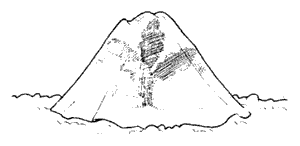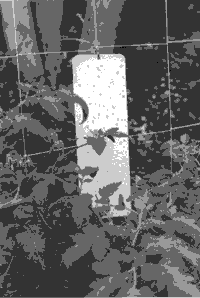 |
Fleece Barrier
A good way to prevent leafminers if you know they are coming is with screening over the target plants if that is a reasonable proposition. Make a barrier from a material that allows sun, air, and rain to get through but prevents the leafminer from getting to your plants. Nylon netting, fine screening, or agricultural fleece are all effective barriers, preventing leafminers from laying eggs at the plant's stem. Cover transplants or newly seeded areas with the preferred material immediately to prevent both insect damage and insect egg laying, which can lead to later damage. Lay the barrier material directly on the plants and seal all the edges to the ground. Provide lots of extra material so that when the plants grow larger they don't strain against the covering.
Pick The Affected Leaves
If the infestation of leafminer is not too serious, you can control the problem simply by removing the leaves showing the tunnels of the pest’s larvae. Throw the leaves in the trash for disposal rather than placing them in the compost pile where they can come out and become adults who will lay more eggs.
 |
Spot Them Early With Sticky Traps
Yellow sticky traps will catch plenty of leafminers, if you don't mind the traps hanging in and among your landscape plants. This technique can give you an alert that the leafminers have arrived so you can use some other product, or they can be used to hopefully keep the numbers down enough to minimize damage to the target plants. Yellow sticky traps are small plastic strips coated with a sticky material. Safe and non-toxic, they last all season, even through water exposure. However, you should use sticky traps for only 3 to 4 weeks; any longer and they'll trap beneficial insects as well. They are sold in garden centers and plant shops to control various insect pests. When inserted in the soil or hung on a plant that is continually troubled by leafminer attack, they attract the little pests and kill them. Place the traps next to (not above) susceptible plants. Go to Yardener’s Tool shed to get more information about Yellow sticky traps.
Make Your Own Sticky Traps - Obtain some panels of a material such as Masoniteä (10 inch by 10 inch squares) and paint them bright yellow (school-bus-yellow, or Rust-Oleumä No. 659 or Sunset Yellow No. 7745), then coat the painted panels with a weatherproof adhesive_pest_product such as Tack Trapä, Tanglefoot ä, motor oil, or petroleum jelly. Then place the traps next to (not above) susceptible plants.
Set Up A “Trap Crop”
The weed lamb's-quarters can be used as a “trap crop” to spot early infestations of leafminers, because that weed is ice cream for leaf miners and it gets hit early in the season if there are leafminers around. Lamb’s quarters are pretty common most anywhere. Dig up a few and replant them within 10 to 15 feet of the plants threatened by the miners and be sure to remove and destroy them as soon as the larvae start working on the trap crop. If you don't want a trap crop, make sure lamb's-quarters are kept out of the garden.
Handpicking
If you have good eyesight and don’t mind leaning over, you can try to handpick the leafminer eggs. Leafminer eggs are dry and unbreakable. Learn to spot them on the undersides of the leaves. Turn the leaves over and look for the eggs, which are chalky white and 1/16 to 1/8 inch long. Three, four, or even five of them will be lined up next to each other. Not all leaves will be affected. Scratch off the cluster with your fingernail. Flies continue to lay eggs, so repeat this process once a week for 3 or 4 weeks. If the eggs have already hatched, the upper surface of the leaves will have grayish blisters. Cut off the blisters. Cut the damaged part out of the leaves; it's not necessary to cut off the entire leaf. The plants will survive and grow quickly if you leave as much healthy tissue as possible. Destroy all the damaged leaf parts that you cut from the plant.

